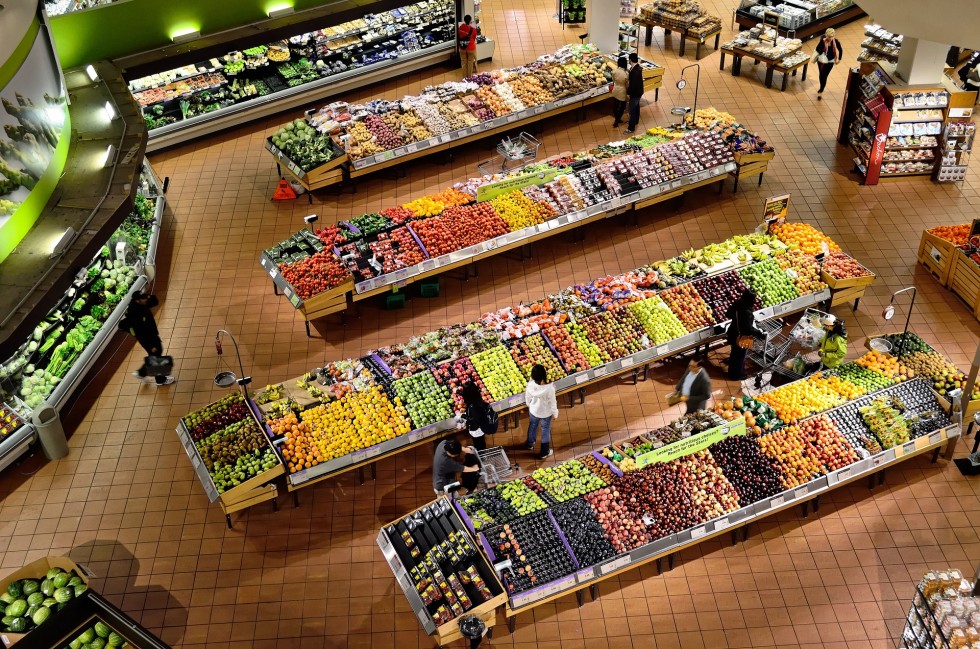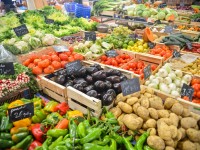Does your groceries spending break your budget? Do you not understand where that money went when you actually didn’t buy as much food as you thought you would?
Are you done throwing away a ton of food every single week and realizing that you’re actually throwing away your own money and precious food supply while people are struggling with malnutrition in other parts of the world?
Well, as Americans spend an inordinate amount of money on their groceries and, unfortunately, tend to get more than they can use and, consequently, throw away roughly 25% of the food they purchase, their health and eating habits are deteriorating.
Fewer and fewer people cook their meals at home while conducting spontaneous supermarket trips and getting a bunch of things that sit in their cupboards, fridges, and pantries until they go bad and belong to the waste.
With the groceries’ prices rising, groceries start taking up more and more significant part of families’ and individuals’ budgets. Then, the fact that about a quarter of that spending is completely unnecessary makes the situation even worse.
Being smart about your choices and your money doesn’t mean cutting down your nutrition and making it less healthy. The result of groceries spending control is completely opposite to that.
Cooking more at home, abandoning frozen and ‘ready-to-go’ meals, implementing more seasonal fruits and vegetables into your diet, reducing the number of treats, using up all food you buy and implementing other tricks to save money on groceries will actually improve the quality of your life.
Gradually, the aim of money saving will turn into a quite pleasant bonus of your smart living and reasonable consumer behavior.
How to save money on groceries
- Keep track of the food you already have.
Make sure to inspect your fridge and pantry bi-weekly (or weekly) to go through the products, check their expiration date and separate the ones you have to use as soon as possible not to throw them away. - Incorporate meal planning and home cooking into your routine.
Make sure that at least your breakfast and dinner is homemade.
If you’re not particularly keen on cooking or if you don’t have too much time for that, devote a couple of hours of two-three days of your week to prepare dinners you’ll be able to eat for a couple of days. - Plan your meals around the supermarket sales, but not vice versa. Use supermarket ads and handy phone apps to do that.
Stick to the basics your nearest supermarket puts on sale and use them as main ingredients for your dinner recipes. - Monitor supermarket’s prices to figure out their sales cycle.
Determine the time when they have the lowest prices for your top 10-15 basic foods and make sure to stock up on them during the lowest price points. - Make shopping lists sticking to your meal plan for the current week and taking into consideration the foods you already have at home. Use one of the shopping list phone apps not to forget paper lists at home.
Make sure to incorporate those into your meal plan to leave less money at the grocery store and throw less money into the trash with the products that have gone bad. - Stick to your groceries list no matter what. In order to make that easier, make realistic shopping lists.
Include a couple of your favorites not to feel unsatisfied, but don’t fill a good half of your shopping cart with them. - Avoid one-two item supermarket runs. Substitute the products you lack with something else.
If you notice that you’re running out of foods by the end of the week, be creative with leftovers and pantry foods.
Basically, use the products you already have instead of buying something for a recipe. - If you find sticking to your shopping list completely impossible, consider online grocery shopping or using grocery shopping and delivery services.
You won’t be tempted by those delicious snacks and treats at your local store.
And, if you make sure to double check your basket before pressing the final “BUY” button to cross out the most unnecessary items, you’ll save even more money. - Pick the nearest supermarket, sign up for its loyalty program and make the full use of its additional permanent client discounts.
- Set a budget for your shopping trip (depending on your list), get yourself a mini calculator (or use your phone) and try not to go beyond your budget by more than $10.
- Couponing is not as granny-like and chaotic as it used to be even a couple of years ago. Surely, you may find quite attractive bargains at your local newspaper.
But, visiting couponing websites (like Coupons.com) and printing out coupons on foods featured on your shopping list is way smarter.
This way you’ll get your well-deserved discount without being triggered to buy something you don’t need just because you have a coupon for it. - Don’t shop when you’re hungry or quite tired. Don’t take too many friends of family members on shopping trips with you not to be influenced by their choices and eliminate impulsive purchases.
- Stop buying packaged salads, baby carrots (which are actually chopped carrots), shredded cheese and carrots, etc., but opt for heads of salads and bundles of vegetables. They’re way cheaper and they remain fresh for much longer. Besides, it’s always fun to make your own mixes instead of being satisfied with what the food producer decided to put for you.
- Opt for seasonal fruit and vegetables. Especially fruit.
Consider buying a bunch of seasonal berries at a lower price and freezing them at home for winter. - Don’t hesitate to buy supermarket brands, especially when it comes to such basics as grains, sugar, flour, butter, canned foods, frozen items etc.
Usually, they’re pretty good and quite cheap at the same time. - Quick oats, rice, and other products might be quite convenient. But what about their price?
Stick to brown or white rice and oat flakes to save money and get the most nutrients out of your grains. - Opt for reusable bags. As you choose to make fewer, but bigger and more price-efficient grocery shopping trips, the number of bags you’ll have to use will multiply.
And those aren’t free, are they? They’re not eco-friendly either.
So, buying a couple of reusable bags turns out to be less expensive in the long run. - Shop for your basic groceries items with long shelf life at Costco.
Look out for sales and get a 6-moths to a year supply of them. - Figure out the layout of the store you shop at the most and go straight to the aisles with products on your list.
The more you walk around the store and the more shelves you pass, the more temptations to buy unnecessary items you’ll experience. - Outwit supermarkets and look up and down the shelves. Stores often prefer positioning pricier items at the people’s eye level. Use a smaller cart too.
- Don’t be ashamed to check out dollar sections and dollar stores.
Dry food and especially little non-groceries items (like kids toys, cleaning supplies, coloring books, etc.) are definitely the things you may save on there. - Consider using different apps that offer cash back for groceries.
Just take picture of your receipt and get some money back.
Now you’ve mastered the art of shopping for groceries! Well done!





